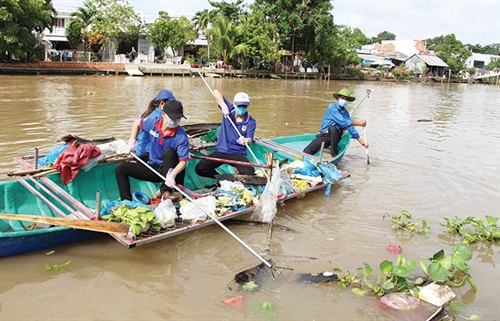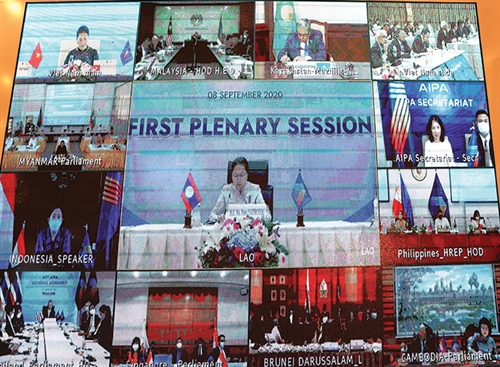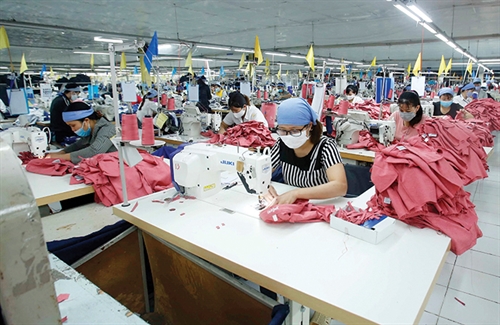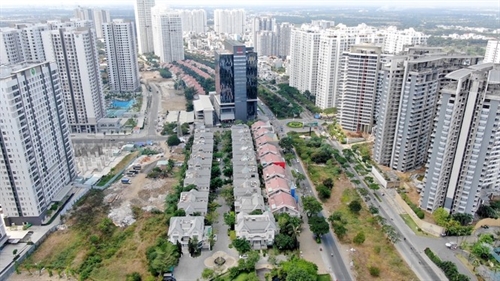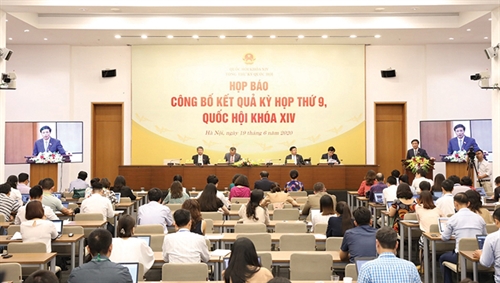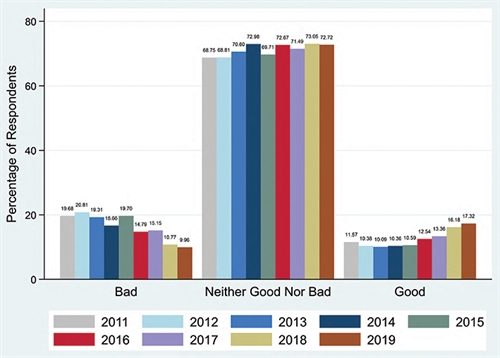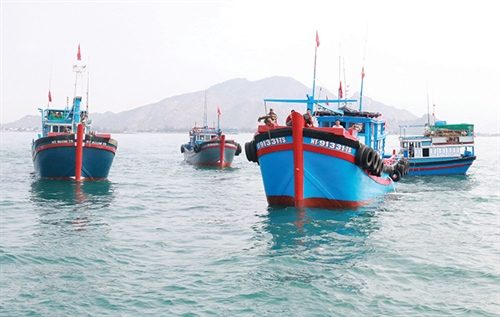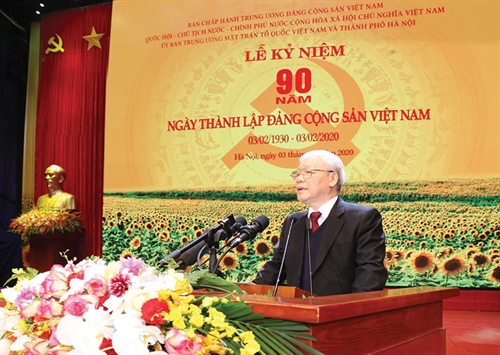The United Nations Population Fund (UNFPA) Country Office in Vietnam has recently rendered technical support to the Ministry of Labor, Invalids and Social Affairs in preparing a review report of 10 years of implementing the Law on Gender Equality of Vietnam. On this occasion, Naomi Kitahara, UNFPA Representative in Vietnam, grants Vietnam Law & Legal Forum magazine an interview on the results achieved in Vietnam’s gender equality work as well as things that should be improved in the future.
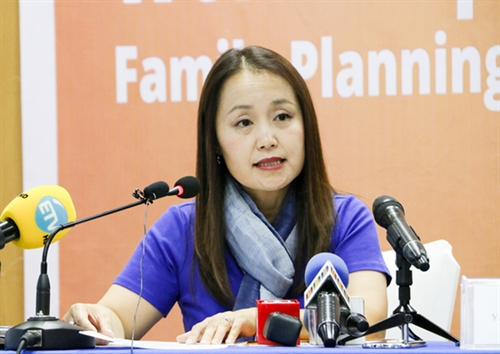 |
| Naomi Kitahara, UNFPA Representative in Vietnam |
In 2006, the first-ever Law on Gender Equality of Vietnam was enacted with a view to mandating governmental agencies to fulfill their responsibilities for gender equality and laying a legal foundation for the handling of violations in the field of gender equality. Since then, the country has also adopted several other policies and measures, including the National Strategy on Gender Equality 2011-20, the Action Plans on Gender Equality 2011-15 and 2016-20, and other legislation defining the responsibilities for the implementation of the Law. How do you assess the results achieved after 10 years’ implementing the Law on Gender Equality in Vietnam, and what are their impacts on the country’s gender equality work?
By enacting the gender equality law, Vietnam has developed the sound legal framework to promote gender equality, along with the approval of other key documents such as Decrees, Circulars, the National Strategy on Gender Equality for the 2010-20 period, and other sectoral programs. These documents have paved the way for and leveraged gender equality work, and created an enabling environment for all interested stakeholders to join the efforts to promote gender equality in various sectors and in a multi-sectoral manner.
As a result, the role and position of women in society have been improved and strengthened, in particular with regard to the number of women appointed in management positions. For instance, for the first time ever, Vietnam has a female leader appointed for the highest legislative organization - the National Assembly, Madame Nguyen Thi Kim Ngan.
Overall, the Government of Vietnam has made good progress in women empowerment and gender equality, which created equal opportunities for both men and women. So far, statistics showed that 92 percent of Vietnamese women were literate. Eighty percent of girls in remote mountainous regions attend schools. Girls account for more than 50 percent of Vietnamese students, 30 percent of Master degree holders and 17 percent of Ph.D degrees. These figures have in some way shown a gap being narrowed in promotion for gender equality. Vietnam has fulfilled several goals set out in the National Strategy on Gender Equality until 2020, particularly those involving economics and employment, which contributed to the country’s efforts to realize Sustainable Development Goals by 2030.
Fully aware of the importance of gender equality in social progress and development, Vietnam has become a signatory to numerous international agreements and treaties on gender equality, women’s rights and women’s empowerment and is therefore obliged to incorporate these international instruments into the country’s domestic legislation. In your opinion, does Vietnam’s Law on Gender Equality completely consist with international human rights standards and if not, what are the inconsistencies?
In principle, the Law on Gender Equality is consistent with the international human rights standards.
In terms of consistency, the Law is consistent with substantive equality. Political representation provisions are consistent with international standards. The Law has considered multiple and intersecting forms of discrimination against women in certain situations, namely rural women in economically disadvantaged conditions and ethnic minority women. It also considers special measures to promote women’s equality in consistency with the Convention on the Elimination of All Forms of Discrimination against Women (CEDAW) as these initiatives seek to ensure that women could enjoy substantive equality (similar outcomes) as men do. The Law is also consistent with awareness raising (information, education, and communication) obligations in CEDAW.
However, there are some provisions of the Law on Gender Equality that are not fully consistent with CEDAW or other treaties (which Vietnam has adopted). These are certain weaknesses or challenges and gender equality issues could be further strengthened through the Law or other legislation. There are also certain omissions that limit progress on gender equality that could be realized by the Law and the overall legal framework. For example, the Law has not yet considered indirect discrimination. Gender is still restricted to male and female category. Gender identity is not yet addressed in the Law. Additionally, harmful practices are not yet identified as expected in CEDAW and the UN Sustainable Development Goals’ Indicator 5.3 regarding prohibited acts, including gender-based violence, are not clearly defined and sanctions are not yet applied.
According to the 2006 Law on Gender Equality, integration of gender equality in the process of formulating legal documents is a measure to achieve gender equality goals. So, whether Vietnam has managed to integrate gender issues in its policies and laws and are there any gaps between the Law on Gender Equality and other legal documents currently in force in Vietnam?
Integration of gender equality in formulating legal documents is mentioned in the Law on Gender Equality and the 2015 Law on Laws.
Under the Law on Gender Equality, it is a compulsory requirement for all submitted draft laws/ordinances to mainstream gender. The 2015 Law on Laws gave a provision that the integration of gender equality into the draft law shall be appraised by the Ministry of Justice, and reviewed by the National Assembly Committee on Social Affairs if the legislation is related to gender equality. However, it is unclear on how to define when the draft law/ordinance ‘is related to gender equality’. This gap may allow policymakers and drafters to use gender-neutral language and ignore potential adverse gender impacts.
In addition, there are gaps between the Law on Gender Equality and the Law on Laws in terms of gender mainstreaming in legislation. This might lead to the gaps between the Law on Gender Equality and other laws as further analyzed below. While the Law on Laws does (in certain cases) require the People’s Council and the People’s Committee to conduct gender equality measure and gender impact assessment of proposed policies in a draft resolution or draft decision, the Law on Gender Equality does not. There is a significant gap in the policymaking process at the national level given that the Law on Gender Equality only imposes the responsibility of gender mainstreaming into draft legal normative documents.
In terms of other extremely gender-sensitive national policies such as socio-economic development plans, national highway, national railway, national airport, national target programs (poverty reduction program, for instance), etc., there are no requirements of gender equality mainstreaming by relevant Laws, including the Law on Gender Equality, the Law on Organization of the National Assembly, and the Law on Organization of the Government.
There are still significant gaps between the Law on Gender Equality and current laws in Vietnam. In the family sector, the Law on Marriage and Family sets different age of marriage for men and women, stating men should be 20 years of age and women 18 years of age. In the 2012 Labor Code and other employment-related laws, the retirement age is set at 55 years for women and 60 years for men. The Labor Code as amended in 2019 by the National Assembly provides for the retirement age of 60 for women and 62 for men. The distinction between men and women would remain.
Similar to the 2012 Labor Code, the Law on Social Insurance in Articles 54 and 55 provides for different ages of male and female employees as a condition for pension eligibility in a number of cases. In addition, there is a difference in the amount annually added monthly to pensions for male and female employees in Article 56. An age difference provision between husband and wife also exists for his/her relatives to be entitled to a monthly survivor benefit.
To advance gender equality from an early age, special measures could be recognized for girls in the Law on Children in relation to access to health (including sexual and reproductive health) and education. A gender-neutral perspective in the Law on Persons with Disabilities masks differences based on sex and gender. Very few provisions in this Law are designed to address the barriers women and girls with disabilities face in access to education and employment opportunities, access to justice, access to sexual and reproductive health services, participation in political and public life, etc. The Law, in Article 5, does not provide for social support for women with disabilities, while it does to children and elderly persons with disabilities.
A significant gap in the Law on Prevention and Control of Domestic Violence is that it is formulated in a gender-neutral manner despite the fact the most common type of domestic violence is violence against women committed by their husband or partner. The scope of the Law (domestic violence of family member against another member) is inconsistent with international standards of gender equality that focus on gender-based violence against women.
The laws related to political and public life, namely the Law on Organization of the National Assembly and the Law on Organization of Local Administration, do not have sufficient measures to enhance women’s participation in decision-making bodies. For example, women’s participation in permanent committees of the National Assembly (except the Committee on Social Affairs). Similarly, political representation of women in People’s Councils and People’s Committees (and the commissions within both bodies) has not reached the expected outcome.
As the Vietnamese Government is about to revise the Law on Gender Equality in the coming time, could you give some recommendations on how the Law in particular, and other state management policies in general, might be revised to further improve gender equality in Vietnam in the future?
I would like to congratulate the Government of Vietnam for its efforts to analyze any gaps in the current Law on Gender Equality and provide subsequent adjustment. Considering the Law on Gender Equality alignment with international human rights standards and to advance the final goal of gender equality, a number of issues could be considered.
In terms of revision of the Law on Gender Equality, firstly, the law should cover “any field” and should not be limited in eight sectors as at present. It should include other areas such as administration of justice, environment, defense and security, religion, and any other fields of life.
Secondly, the terminology should be defined and reviewed to ensure consistency with CEDAW definitions. The definitions of gender, gender identity, direct discrimination, indirect or adverse effect discrimination, gender-based violence, harassment, etc., were included and clearly defined in CEDAW’s General Recommendations.
Thirdly, information for indirect discrimination should be recognized and included in the Law on Gender Equality. The lack of technical knowledge on equality and non-discrimination leads to the misconception that gender-neutral policies, laws, and plans do not discriminate. If all forms of discrimination were included in the law, including indirect or adverse effect discrimination, the regulation of gender-based discrimination would meet the international standards and, at the same time, help facilitate greater gender equality mainstreaming in gender-neutral policies and legislation.
Fourthly, prohibited acts should be defined and the sanctions for the prohibited acts should be clarified. At the same time, responsibilities related to complaints of gender-based discrimination should be defined. The Law on Gender Equality should eliminate current overlaps in responsibilities of state management. For example, the Law on Prevention and Control of Domestic Violence gives to Ministry for Culture, Sports, and Tourism the power to deal with domestic violence acts, while the Law on Gender Equality provides that Ministry of Labor, Invalids and Social Affairs has authority on gender-based violence, whereas these two issues are interlinked and should be addressed at the same time to avoid overlap and duplication. Similarly, the 2016 Law on Children stipulates that Ministry of Labor, Invalids and Social Affairs has the power to deal with violent acts to girls that happened in the family while the Ministry of Health has similar authority over prenatal sex selection, kind of gender-based violence, according to Decree 70 of 2008 guiding the Law on Gender Equality.
Fifthly, harmful acts resulting in gender inequality, including son preference, gender-biased sex selection, sexual harassment, and early or forced marriage, should be defined in a decree amending or superseding Decree 70 of 2008 once it is revised or replaced. Additionally, such a decree and the Law on Laws should be consistent with regard to gender mainstreaming requirements. Requirements for gender mainstreaming and gender impact assessment for other national policies and plans at the central level, as well as for legal normative documents of local administrations, should also be included.
The implementation of decrees and circulars on state management bodies related to budget allocations, gender mainstreaming, and handling administrative violations of the Law on Gender Equality should also be revised. For example, level of monetary sanctions for violations of gender equality regulations should be increased and criminal or quasi-criminal for all gender-based discrimination and harmful acts such as sex-selective abortion and forced marriage shall be considered. Such revision will provide sound and firm legal foundation for other laws to increase the sanctions for gender-based discrimination and violations.
At the same time, other national laws should also consider certain revisions to address any gender gaps. Specifically, roles and responsibilities related to gender-based domestic violence against women and gender-biased sex selection, both of which are manifestations of gender inequality, should be clarified. The Law on Marriage and Family should consider the adjustment of the marriage age to be the same for women and men. Regulations of sectoral laws should consider reviewing the age of retirement and other age differences between men and women.
The laws and their implementing decrees should be reviewed to include and/or increase monetary sanctions for violations of gender equality and consider criminal or administrative sanctions in a more comprehensive manner for all gender-based discrimination and harmful acts. Some related laws include the Penal Code, Labor Code, Law on Prevention and Control of Domestic Violence, and Law on Handling of Administrative Violations, etc.
A clear, strong provision on gender equality as a compulsory principle of gender equality should be included in the Law on Organization of the National Assembly and the Law on Organization of Local Administration to ensure gender equality mainstreaming occurring in the National Assembly and its Committees, People’s Councils and People’s Committees.
The policies on special measures for women who face multiple forms of discrimination such as female immigrants, disabled women, women in mountainous remote and difficult areas, and ethnic minority women, etc., should be further developed.
The Law on Laws should be consistent with the Law on Gender Equality. Gender equality mainstreaming should act as a mandatory requirement of all laws, regardless of whether the law is focused on gender or not.
With the task of promoting the right of every woman, man and child to enjoy a life of health and equal opportunity, can you introduce other gender equality-related activities that UNFPA Country Office in Vietnam has conducted so far?
UNFPA has supported Vietnam to end violence against women and harmful practices through various activities such as raising awareness, strengthening the policy system, and supporting services and data collection.
In terms of raising awareness on prevention and control of violence against women and girls, from 2012 to 2017, UNFPA had supported Ministry of Culture, Sports and Tourism to conduct annual campaigns in response to 16 days of activism in ending violence against women. With UNFPA support to Ministry of Labor, Invalids and Social Affairs, the National Action Month on Gender Equality and Prevention and Response to Gender-Based Violence was organized the first time in Vietnam in 2016, and continued to date. From 2016 up to now, UNFPA has continually supported Ministry of Labor, Invalids Social Affairs to conduct the campaign in response to the National Action Month with thousands of activities that reach millions of people nationwide.
At the same time, UNFPA also supported Vietnam to strengthen policies related to gender and gender-based violence. UNFPA has supported Ministry of Culture, Sports and Tourism in the promulgation of the coordination mechanism in domestic violence prevention and control, approved by the Prime Minister. UNFPA has supported Ministry of Labor, Invalids and Social Affairs to develop the national thematic program on gender-based violence prevention and response, 2016-20 and 2021-25 periods.
UNFPA has also supported Ministry of Health to develop Circular 16 of 2009 and Circular 24 of 2017 (amending Circular 16) on receiving, treating, collecting information and reporting on victims of domestic violence at health centers and for Ministry of Health’s decision on guidance on medical care and support for victims of sexual violence (Decision 3133 of 2020).
In terms of data collection, UNFPA has supported Ministry of Labor, Invalids and Social Affairs to review 10 years’ implementation of the Law on Gender Equality, and the Law on Prevention and Control of Domestic Violence, and in collaboration with Ministry of Labor, Invalids and Social Affairs and General Statistics Office, conducted two national studies on violence against women, in 2010 and 2019.
At the same time, it has supported the Government, including Ministry of Labor, Invalids and Social Affairs and local authorities, to strengthen supporting the services system to gender-based violence survivors. Under recent KOICA-funded project, a one-stop crisis center in Quang Ninh province, namely Anh Duong House, is established to support gender-based violence survivors and enhance quality of the services. This center also integrates the results of UNFPA implementation of essential services packages for women and girls subject to violence against women in Vietnam.- (VLLF)
